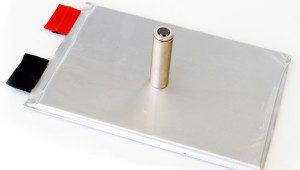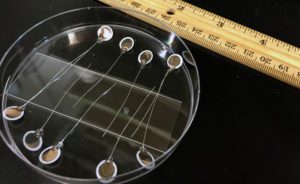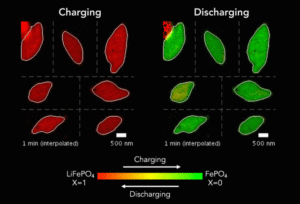Researchers at French battery-maker Saft and Université Paris Est have, for the first time, used a nanocomposite metal hydride as the anode in a complete solid-state battery with a sulfur cathode and LiBH4 electrolyte. In “An all-solid-state metal hydride-Sulfur lithium-ion battery,” published in the Journal of Power Sources, Pedro López-Aranguren and colleagues explain that their… Read more »
Search Results Found For: "NANO ONE"
Tesla’s chief motor engineer discusses the potential of next-generation motor technologies
Tesla spends a considerable amount of resources on basic research into EV systems – as well it should. EV technology is very young compared to that of ICE vehicles, so it’s safe to assume that, in a few short years, the aggregate of many incremental technology advances could lead to significantly better EVs. Of course,… Read more »
New interfacial architecture enables high-energy solid-state Li battery
Researchers led by a team from China’s Ningbo Institute of Materials Technology and Engineering have developed stable solid-state lithium batteries with high energy and power densities. In “High-Energy All-Solid-State Lithium Batteries with Ultralong Cycle Life,” published in Nano Letters, the scientists explain how they developed a new interfacial architecture. They say that their design approach… Read more »
Researchers increase energy density by eliminating first-cycle capacity loss
In the quest to increase the energy density of Li-ion batteries, Yuan Yang, an Assistant Professor at Columbia Engineering, has developed a novel approach: reducing or eliminating capacity loss that occurs when a battery is first manufactured. In a paper recently published in Nano Letters, Yang and colleagues explain how this new method could improve… Read more »
New supercapacitor has the potential for “astonishingly high” capacity
Supercapacitors, which can be charged rapidly and deliver intense bursts of power, are a hot topic these days. However, current supercapacitors use components made of carbon, which require high temperatures and harsh chemicals to produce. Now researchers at MIT and elsewhere have developed a supercapacitor that uses no conductive carbon, and that could potentially produce… Read more »
Henrik Fisker to launch new company, build 400-mile EV
Danish-born car designer and entrepreneur Henrik Fisker has relaunched his namesake company, and plans to showcase a vehicle in the second half of 2017. The new luxury EV will be a “spiritual successor” to the ill-fated Fisker Karma, and will use proprietary batteries made by a new Fisker subsidiary, Fisker Nanotech. “We have really been… Read more »
New separator membrane could enable faster charging, eliminate thermal runaway
Researchers from Ohio State University have designed a thin plastic membrane that could improve the charging speed of current batteries, and possibly enable a new type of battery as well. In a study published in the journal Energy & Environmental Science, assistant professor Vishnu-Baba Sundaresan and doctoral student Travis Hery argue that current battery designs… Read more »
New X-ray microscopy technique reveals the secret life of batteries
In pursuit of their quest for more capable batteries, scientists are searching for better ways to observe battery particles as they charge and discharge in real time. A new technique developed at Berkeley Lab’s Advanced Light Source is providing researchers with nanoscale images of the electrochemical reactions that make lithium-ion batteries do their thing. In… Read more »
Researchers make a major advance in silicon anodes
Current electrode materials such as graphite are able to stably adsorb only a limited number of lithium ions, an inconvenient truth that restricts capacity. That’s why researchers around the world are investigating semiconductor materials such as silicon as alternative electrodes. Bulk silicon is able to accommodate enormous quantities of lithium, but the migration of the… Read more »
Graphene cages could be the key to silicon anodes
Battery boffins are buzzing about silicon anodes, which could store up to 10 times more energy than today’s anodes. The catch is that silicon particles tend to swell and crack during cycling, and to react with the electrolyte in unwanted ways. Now a team from Stanford University and the Department of Energy’s SLAC National Accelerator… Read more »












